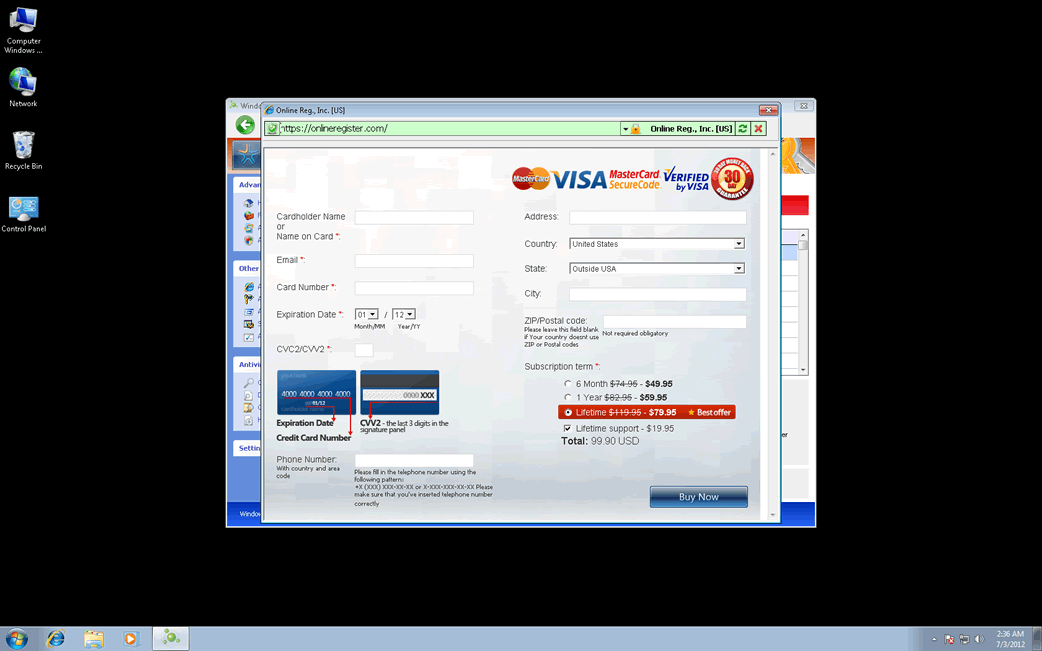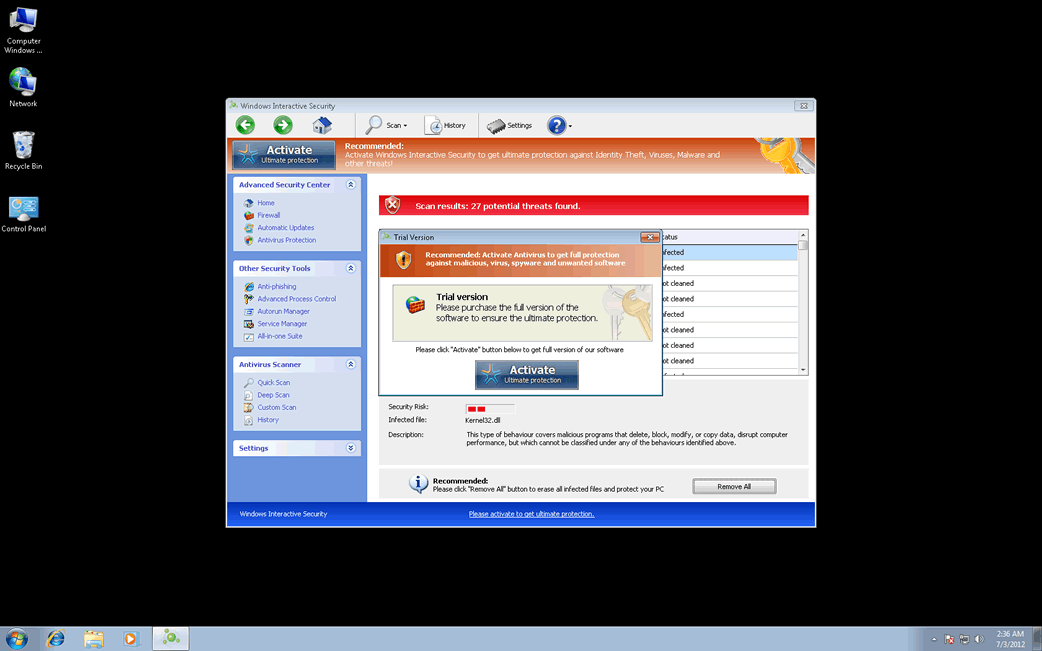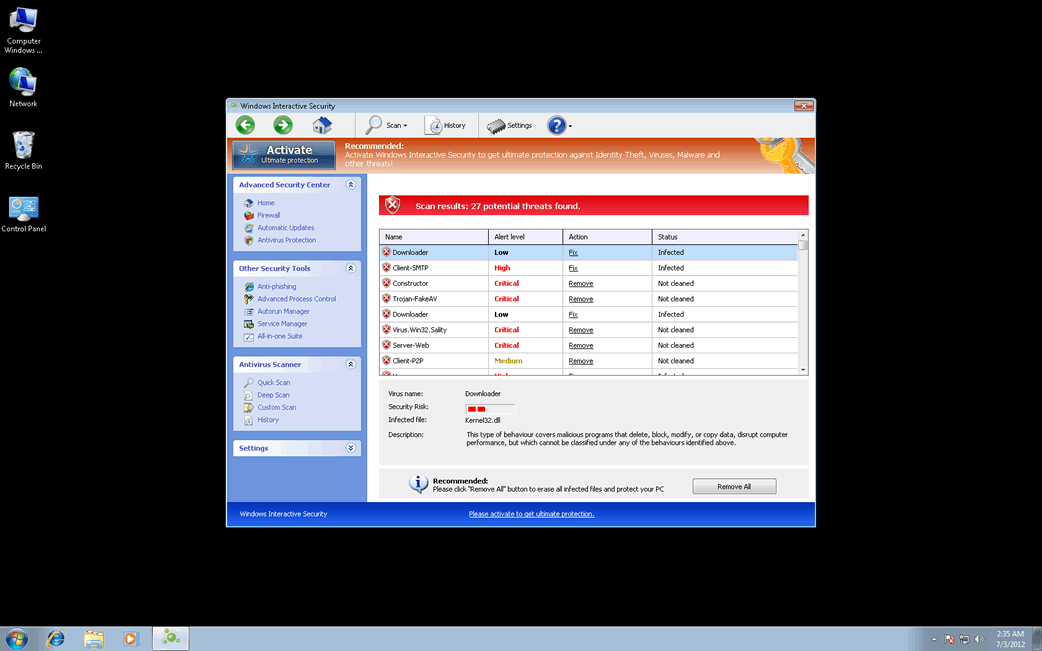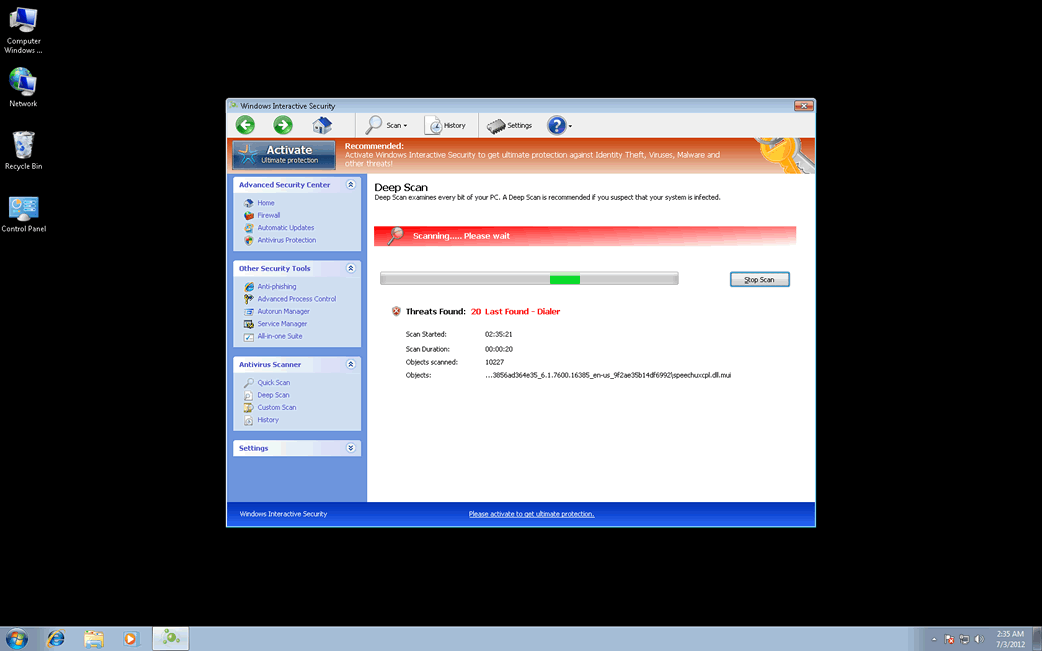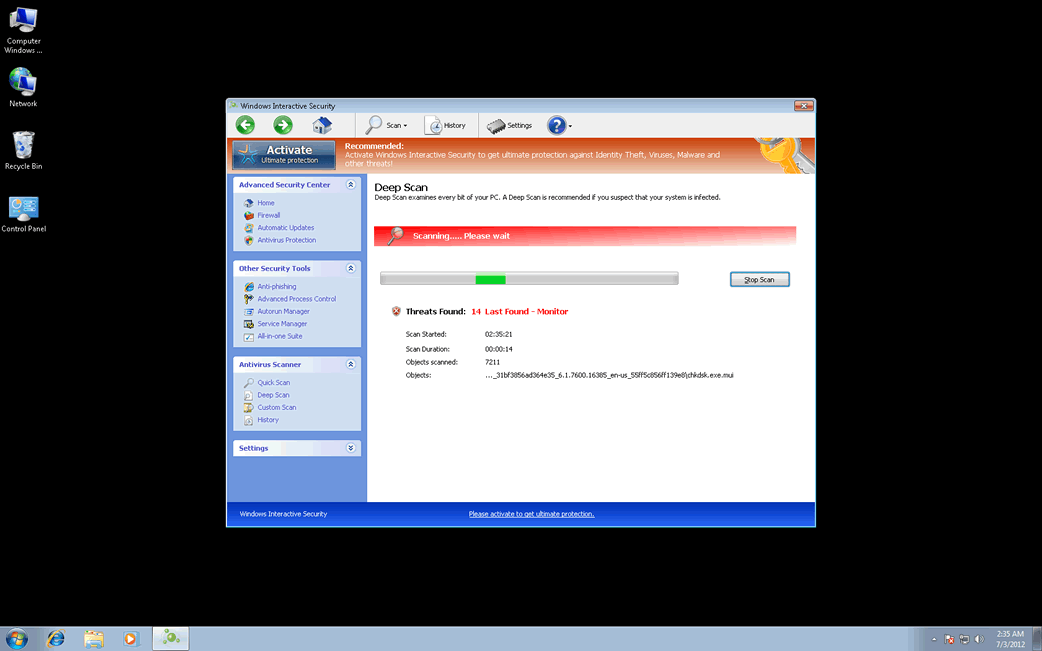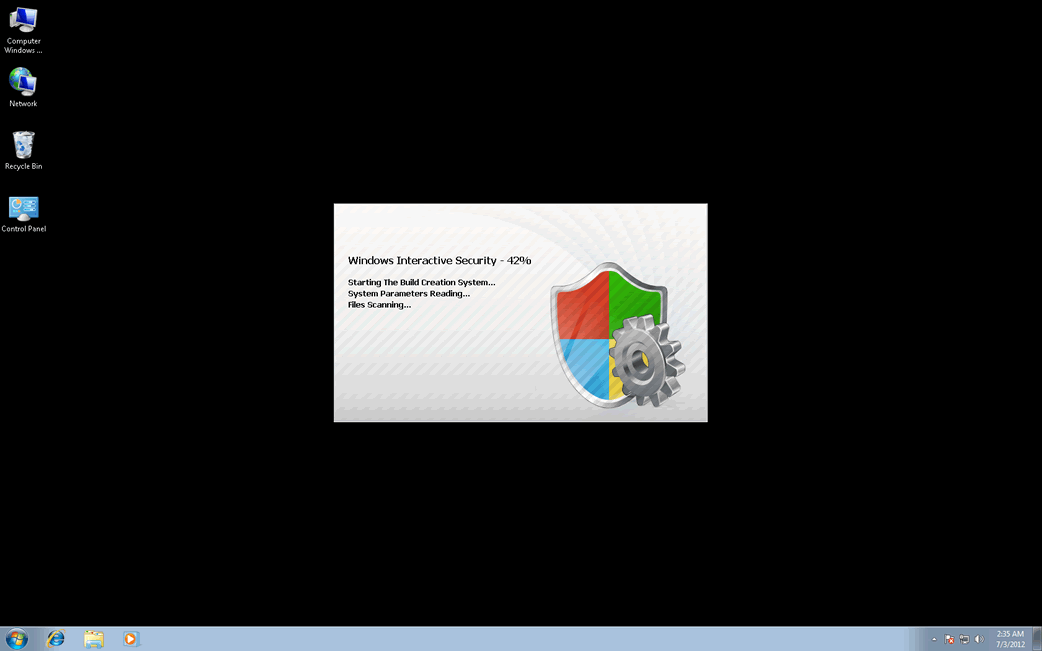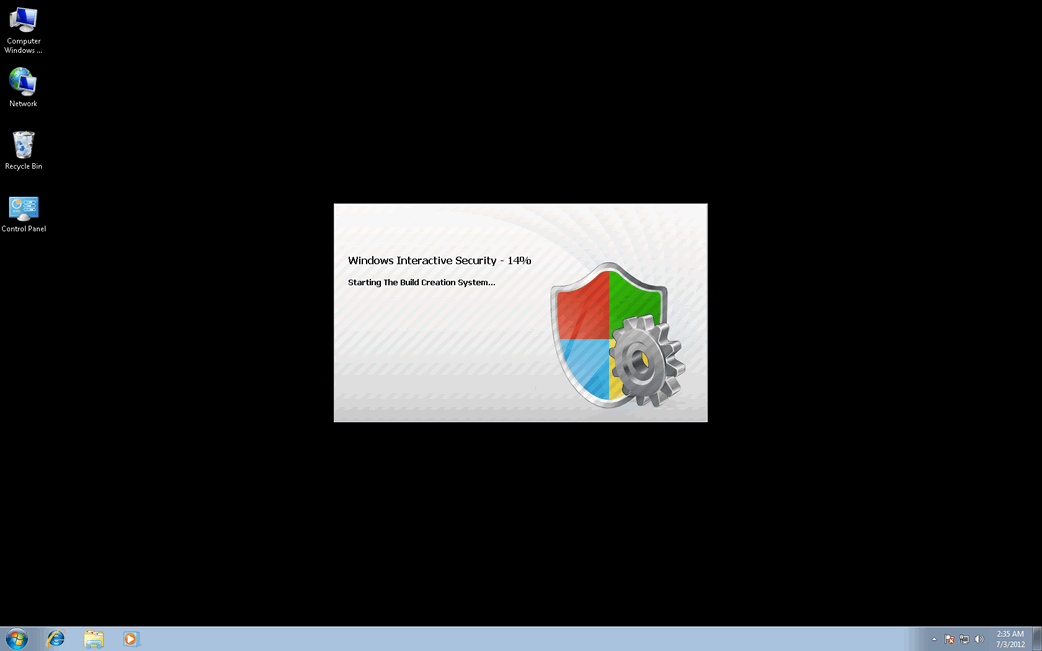Windows Interactive Security
Threat Scorecard
EnigmaSoft Threat Scorecard
EnigmaSoft Threat Scorecards are assessment reports for different malware threats which have been collected and analyzed by our research team. EnigmaSoft Threat Scorecards evaluate and rank threats using several metrics including real-world and potential risk factors, trends, frequency, prevalence, and persistence. EnigmaSoft Threat Scorecards are updated regularly based on our research data and metrics and are useful for a wide range of computer users, from end users seeking solutions to remove malware from their systems to security experts analyzing threats.
EnigmaSoft Threat Scorecards display a variety of useful information, including:
Ranking: The ranking of a particular threat in EnigmaSoft’s Threat Database.
Severity Level: The determined severity level of an object, represented numerically, based on our risk modeling process and research, as explained in our Threat Assessment Criteria.
Infected Computers: The number of confirmed and suspected cases of a particular threat detected on infected computers as reported by SpyHunter.
See also Threat Assessment Criteria.
| Ranking: | 15,843 |
| Threat Level: | 100 % (High) |
| Infected Computers: | 21 |
| First Seen: | July 2, 2012 |
| Last Seen: | May 6, 2024 |
| OS(es) Affected: | Windows |
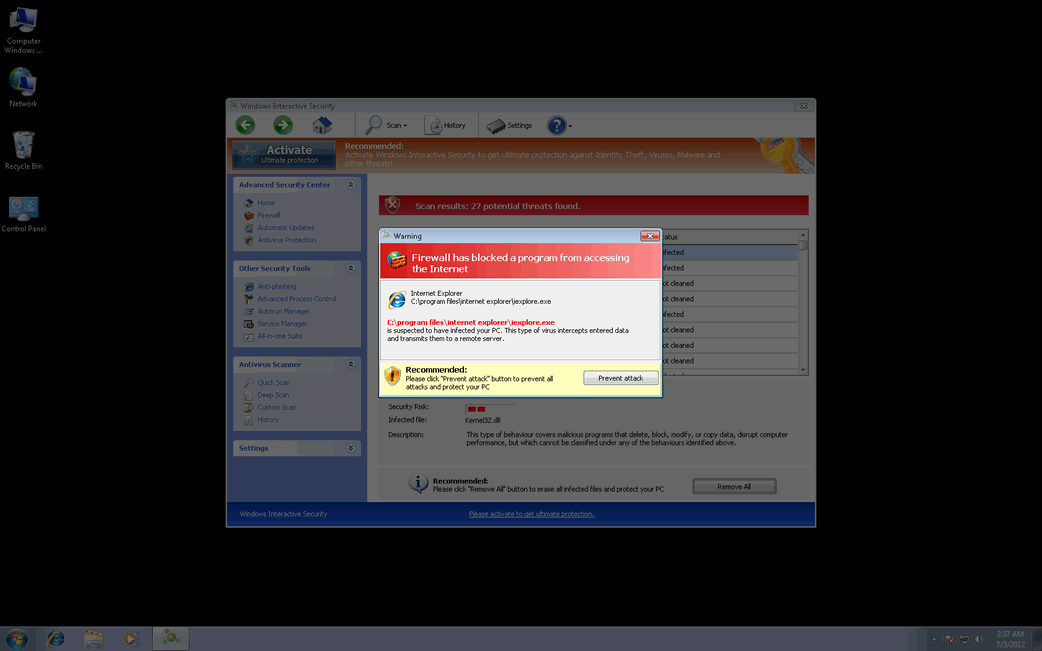
Windows Interactive Security Image
Windows Interactive Security is one of the myriad variants of malware in the FakeVimes family of rogue anti-virus applications. This family of malware has seen a marked resurgence in 2012 due to the innovation of bundling these dangerous fake security applications with rootkits in the ZeroAccess family of malware. The rootkit component gives Windows Interactive Security, and other FakeVimes variants greater resilience to removal than ever before, often requiring the help of a specialized tool in order to deal with its associated rootkit infection. Like most rogue security programs, Windows Interactive Security will try to profit by convincing its victims that they must purchase a useless, and expensive, 'full version' of Windows Interactive Security in order to remove a nonexistent malware infection on their computer system. ESG security analysts consider that Windows Interactive Security and its clones pose a significant security risk and should be removed immediately with the assistance of an acclaimed anti-malware utility.
Table of Contents
Windows Interactive Security and the FakeVimes Family of Rogue Security Software
Fake security applications in the FakeVimes family have been released continuously since 2009, meaning that as of July of 2012 there are dozens of variants of this fake security application. While the malware applications themselves have evolved little since 2009 and are quite easy to remove by most security programs, the means of delivery, social engineering tactics, and associated malware programs and malicious scripts have gotten increasingly more complex over time. This means that a modern FakeVimes-related malware infection will usually involve various components working together to install Windows Interactive Security and similar programs, other malware, and protecting these malware infections from removal. Since the beginning of 2012, new variants in the FakeVimes family have been released nearly daily, including such fake security programs as Virus Melt, Presto TuneUp, Fast Antivirus 2009, Extra Antivirus, Windows Security Suite, Smart Virus Eliminator, Packed.Generic.245, Volcano Security Suite, Windows Enterprise Suite, Enterprise Suite, Additional Guard, PC Live Guard, Live PC Care, Live Enterprise Suite, Security Antivirus, My Security Wall, CleanUp Antivirus, Smart Security, Windows Protection Suite, Windows Work Catalyst.
What to Do If Your Computer is Infected with Windows Interactive Security
First of all, it is pivotal to disregard all warnings coming from Windows Interactive Security, however alarming. This fake security program will urge you to purchase a 'registration code'. Since Windows Interactive Security has no real anti-malware components, all this registration code will do is stop Windows Interactive Security from displaying irritating error messages. You can 'register' Windows Interactive Security by entering the code 0W000-000B0-00T00-E0020. It is important to remember, however, that this will not remove Windows Interactive Security or its associated malware from your computer system. To do that, you will require the help of a dependable anti-malware program with anti-rootkit capabilities.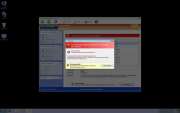
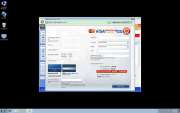

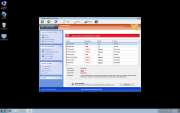
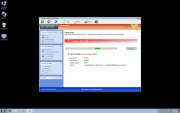


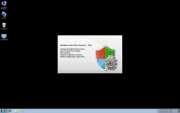
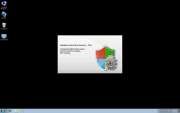

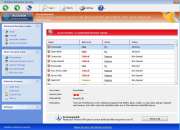
SpyHunter Detects & Remove Windows Interactive Security

Windows Interactive Security Video
Tip: Turn your sound ON and watch the video in Full Screen mode.

File System Details
| # | File Name | MD5 |
Detections
Detections: The number of confirmed and suspected cases of a particular threat detected on
infected computers as reported by SpyHunter.
|
|---|---|---|---|
| 1. | 0536af8c4980a76092d6c078d85e7b163e3821d4dd53ab8bb039044dcde7988a.exe | c620a4bf5f569ac979ecb0f20ad1ea75 | 4 |
| 2. | %AppData%\Protector-[RANDOM CHARACTERS].exe |

